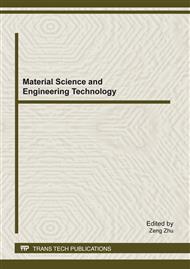p.480
p.487
p.492
p.500
p.506
p.512
p.516
p.524
p.532
Research on Dynamic Threshold Based Energy Detection in Cognitive Radio Systems
Abstract:
In cognitive radio networks, nodes should have the capability to decide whether a signal from a primary transmitter is locally present or not in a certain spectrum within a short detection period. Traditional spectrum sensing schemes based on fixed threshold are sensitive to noise uncertainty, a fractional fluctuate of average noise power in a short time can lead the performance of spectrum detection drop seriously. This paper presents a new spectrum detection algorithm based on dynamic threshold. Theoretical results show that the proposed scheme debate the noise uncertainty, and good detection performance can be gained, if suitable dynamic threshold is chosen. In other words, the proposed scheme can enhance the robustness against noise and improve the capacity of spectrum sensing.
Info:
Periodical:
Pages:
506-511
Citation:
Online since:
February 2012
Authors:
Price:
Сopyright:
© 2012 Trans Tech Publications Ltd. All Rights Reserved
Share:
Citation:


